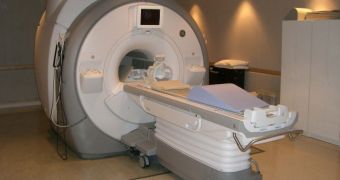A team of researchers recently used a form of medical imaging to gain new insight into how people and animals alike learn from their competitors, as well as from failure and successes.
The investigators used Magnetic Resonance Imaging (MRI) to look at the brain activity patterns of test subjects, as the individuals were playing a computer game against a virtual opponent.
The science team, which is based at the Bristol University, in the United Kingdom, believes keeping an eye on the actions of the competition is a critical part of the overall learning process.
The research was led by UB Graduate School of Education senior lecturer Dr Paul Howard-Jones, who collaborated closely with colleague Dr Rafal Bogacz, who is a senior lecturer in the Department of Computer Science at the university.
During the experiments, computer players and test participants took turns selecting one of four boxes, whose payout simulated the flow of natural resources, the team says.
People naturally showed a tendency to learn from their own successful decisions, but they exhibited no increased amount of neural activity when they noticed the computer doing the same type of choices.
Much to the researchers' amazement, the participants only displayed increased levels of brain activity when the computer made an unexpected mistake.
MRI scans showed a double effect of such instances on the players' brains. First of all, increased activity was generated in areas of the brain in charge of handling rewards.
Secondly, cortical regions involved with controlling cortical response were also activated above average levels.
The main conclusion that can be drawn from this, the team says, is that we are hardwired to learn from our competitors' mistakes, with our brains inhibiting actions that may lead to the same outcome.
“We were surprised to see the mirror neuron system activating in response to a computer,” explains UB expert Dr Howard-Jones.
“If the human brain can respond as though a computer has a mind, that’s probably good news for those wishing to use the computer as a teacher,” he adds.
Details of the new research appear in the latest online issue of the esteemed journal NeuroImage.

 14 DAY TRIAL //
14 DAY TRIAL //